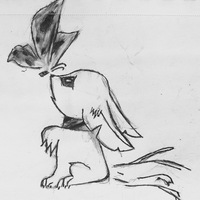
В прямом круговом цилиндре осевое сечение квадрат, боковая поверхность его равна 80π см2. Найти
полную поверхность цилиндра. 0
0
 0
0
Ответы на вопрос
 Внимание! Ответы на вопросы дают живые люди. Они могут содержать ошибочную информацию, заблуждения, а также ответы могут быть сгенерированы нейросетями. Будьте внимательны. Если вы уверены, что ответ неверный, нажмите кнопку "Пожаловаться" под ответом.
Внимание! Ответы на вопросы дают живые люди. Они могут содержать ошибочную информацию, заблуждения, а также ответы могут быть сгенерированы нейросетями. Будьте внимательны. Если вы уверены, что ответ неверный, нажмите кнопку "Пожаловаться" под ответом.

S -полная поверхность цилиндра
r -радиус окружности основания цилиндра
h -высота цилиндра
S₁=2πrh боковая поверхность
h=2r (осевое сечение квадрат)
S₁=4*π*r²=80*π
r²=20
S₂=π*r²=20*π площадь основания
S=S₁+2*S₂=80*π+2*20*π=120*π
S=120*π полная поверхность цилиндра
 0
0
 0
0

Problem Analysis
We are given that the cross-section of a circular cylinder is a square, and the lateral surface area of the cylinder is 80π cm². We need to find the total surface area of the cylinder.Solution
To find the total surface area of the cylinder, we need to consider the lateral surface area and the areas of the two circular bases.Let's denote the side length of the square cross-section as s and the height of the cylinder as h.
The lateral surface area of the cylinder is given as 80π cm². Since the cross-section is a square, the lateral surface area can be calculated as the perimeter of the square multiplied by the height of the cylinder:
Lateral Surface Area = 4s × h
We are also given that the lateral surface area is equal to 80π cm²:
4s × h = 80π The area of each circular base of the cylinder is given by the formula:
Base Area = πr²
Since the cross-section is a square, the diagonal of the square is equal to the diameter of the circular base. The diagonal of a square can be calculated using the formula:
Diagonal = s√2
The radius of the circular base is half the diagonal:
Radius = s√2 / 2
Therefore, the area of each circular base can be calculated as:
Base Area = π(s√2 / 2)² = πs² / 2
The total surface area of the cylinder is the sum of the lateral surface area and the areas of the two circular bases:
Total Surface Area = Lateral Surface Area + 2(Base Area)
Substituting the values from equation:
Total Surface Area = 80π + 2(πs² / 2)
Simplifying:
Total Surface Area = 80π + πs²
Now we have an equation to calculate the total surface area of the cylinder in terms of the side length of the square cross-section.
Let's solve this equation to find the value of the total surface area.
Calculation
To find the value of the total surface area, we need to know the value of the side length of the square cross-section. Unfortunately, the given information does not provide the value of s. Therefore, we cannot calculate the exact value of the total surface area without additional information.If you have the value of s, please provide it, and I will be happy to calculate the total surface area for you.
 0
0
 0
0
Топ вопросов за вчера в категории Математика
Последние заданные вопросы в категории Математика
-
Математика
-
Литература
-
Алгебра
-
Русский язык
-
Геометрия
-
Английский язык
-
Химия
-
Физика
-
Биология
-
Другие предметы
-
История
-
Обществознание
-
Окружающий мир
-
География
-
Українська мова
-
Информатика
-
Українська література
-
Қазақ тiлi
-
Экономика
-
Музыка
-
Право
-
Беларуская мова
-
Французский язык
-
Немецкий язык
-
МХК
-
ОБЖ
-
Психология
-
Физкультура и спорт
-
Астрономия
-
Кыргыз тили
-
Оʻzbek tili





















